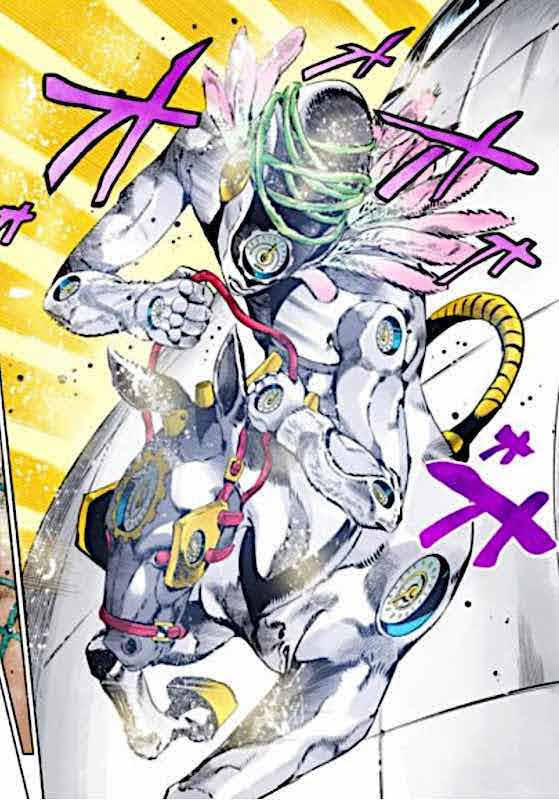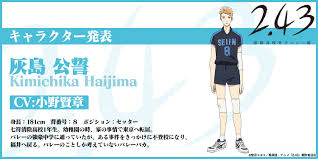"Cells at Work!" was made into an anime in July 2018. It has gained popularity as a work that depicts the daily lives of tiny cells. "Cells at Work!" was also a huge hit as a manga, but did you know that there is actually a spin-off work of "Cells at Work!"?

Source: Cells at Work! © Akane Shimizu/Kodansha, Aniplex, davidproduction
There are three spin-off works of "Cells at Work!": "Cells at Work!", "Working Bacteria," and "Cells at Work! BLACK." Each of these works explores aspects of the human body not depicted in the original "Cells at Work!" series.
This time, we'd like to introduce three spin-off works of "Cells at Work!" by focusing on them.
Spin-off works have different authors

Source: Cells at Work! © Akane Shimizu / Kodansha, Aniplex, David Productions
The author of "Cells at Work!" is Akane Shimizu, but for the spin-off works, Akane Shimizu serves as supervisor, and the authors are different.
The manga for "Cells at Work" is by Sugimoto Moe, "Cells at Work! Bacteria" is by Yoshida Haruyuki, and "Cells at Work! BLACK" is by Hatsuya Issei. Since each manga is drawn by a different artist, the art style and character designs are naturally different as well.

Source: Cells at Work © Akane Shimizu/Kodansha, Aniplex, davidproduction
Including these aspects, you can enjoy a different worldview from "Cells at Work." Even the same red blood cells and bacteria look different in each work, so you can see them in a different light.

Source: Cells at Work! © Akane Shimizu / Kodansha, Aniplex, davidproduction
The Daily Life of a Troublesome Red Blood Cell: "Lazy Cells"
"Lazy Cells" depicts cells that, despite being capable of becoming red blood cells, remain lazy as erythroblasts. While the red blood cells are efficient and carry out their daily work, the characters remain as erythroblasts, despite having fully grown and being able to become red blood cells at any time.

Source: Cells at Work! © Akane Shimizu/Kodansha, Aniplex, David Production
Introducing the erythroblasts, who refuse to become red blood cells, and Professor Macrophage, who is at their mercy, while repeatedly making various lame excuses and arguments.
The setting is red bone marrow, where erythroblasts develop.

Source: Cells at Work! © Akane Shimizu/Kodansha, Aniplex, David Production
The setting of this work is red bone marrow, where erythroblasts develop before they become red blood cells. In this story, erythroblasts are raised by macrophages and develop into fully-fledged red blood cells, but a certain class of erythroblasts remain erythroblasts despite being fully grown. The story depicts the daily lives of these erythroblasts, who are already capable of working but don't work, and the macrophages who want them to become red blood cells and start working right away.
Character Introduction
We will introduce the characters from "Cells at Work," including the lazy erythroblasts, and the reasons why they don't work.
Character 1: 871 (Yanai-kun)

Source: Cells at Work! © Shimizu Akane/Kodansha, Aniplex, David Production
The protagonist, the erythroblast, is capable of becoming a red blood cell, but refuses to enucleate. Even though the macrophage encourages him to become a red blood cell, he uses various excuses to refuse to work.
Typical excuses include, "I don't want to denuclearize because it would mean losing my core (myself)" and "It's not that I can't work, I just don't want to work," which are typical excuses of the NEET variety.
Character 2: 036 (Osamu)

Source: Cells at Work! © Akane Shimizu/Kodansha, Aniplex, David Production
A bespectacled erythroblast. He is always reading books and constantly studying about the human body. Despite his extensive knowledge of the human body, he refuses to become a red blood cell.
The reason given was that they did not have sufficient knowledge and did not want to become red blood cells. At first glance, this may seem reasonable, but they are using it as an excuse to avoid becoming red blood cells.
Character 3: 328 (Mitsuba-chan)
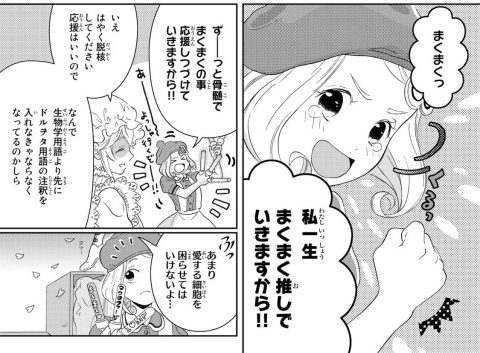
Source: Cells at Work! © Akane Shimizu/Kodansha, Aniplex, David Production
A female erythroblast and a fan of Macrophage. She sees Macrophage as an idol and is dedicated to her otaku activities.
The reason I'm not a red blood cell is because I'm a fan of Professor Macrophage, who lives in the red bone marrow. As a macrophage fan, I've remained an erythroblast so I can always support him closely.
I call macrophages "Makumaku."
Character ④ 3104 (Saionji-kun)

Source: Cells at Work! © Akane Shimizu/Kodansha, Aniplex, David Production
An elegant, prince-like erythroblast. He believes that he will one day become the king of cells.
He is vain and overconfident, thinks of himself as a king, and refuses to function like a red blood cell.
Character ⑤ 1516 (Hikojuro-kun)
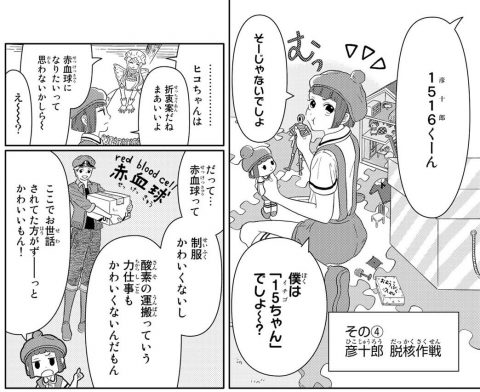
Source: Cells at Work! © Shimizu Akane / Kodansha, Aniplex, David Productions
The oldest character among the Lazy Erythroblasts. Although she is tall, she wants people to see her as cute, so she makes people call her "15 (Ichigo)-chan."
The reason she doesn't become a red blood cell is because she won't be able to continue being a cute character once she becomes an adult.
Character ⑥: Professor Macrophage
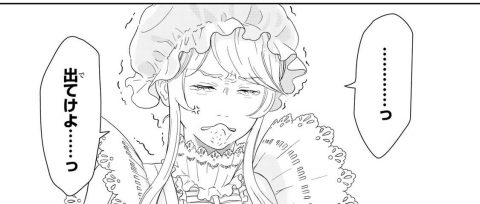
Source: Cells at Work! © Akane Shimizu/Kodansha, Aniplex, David Production
Macrophage is the homeroom teacher for the non-working erythroblasts. Wanting them to become red blood cells as soon as possible, he tries every trick in the book to persuade them, but they refuse to listen.
What do macrophages do with non-functioning cells?
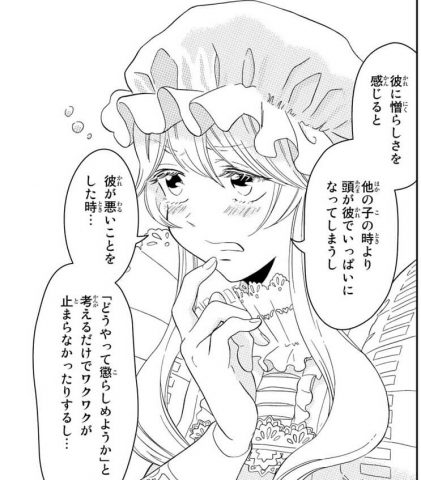
Source: Cells at Work! © Shimizu Akane / Kodansha, Aniplex, davidproduction
As revealed towards the end of Volume 1 of "Cells at Work!", macrophages, which nurture erythroblasts, can actually dispose of poorly performing erythroblasts.
After learning this truth, Dr. Macrophage wonders what he'll do with the non-working erythroblasts, leaving us wanting more.
Good Bacteria, Bad Bacteria, and Opportunistic Bacteria: "Working Bacteria"
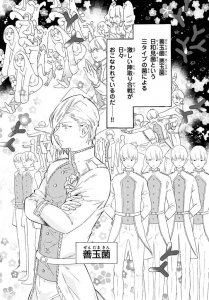
Source: Cells at Work © Shimizu Akane / Kodansha, Aniplex, davidproduction
"Working Bacteria" depicts the bacteria that inhabit the body, skin, and other areas. Not all bacteria are harmful to the human body.
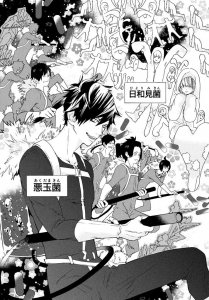
Source: Cells at Work! © Akane Shimizu/Kodansha, Aniplex, davidproduction
There are three types of bacteria: good, bad, and opportunistic. They live each day competing for power. You can see these bacteria at work.
Good Bacteria
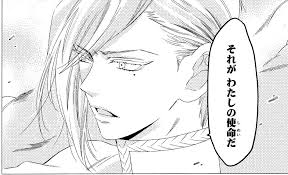
Source: Cells at Work! © Akane Shimizu/Kodansha, Aniplex, David Production
Bifidobacteria are bacteria that have a beneficial effect on the human body. In this work, bifidum bacteria, a resident intestinal flora, often appear. They engage in a daily battle for territory with bad bacteria, with the outcome changing depending on the host's health.
Bifidum bacteria emit beams of acetic acid, which is produced from dietary fiber and other substances, weakening bad bacteria.
Bad Bacteria
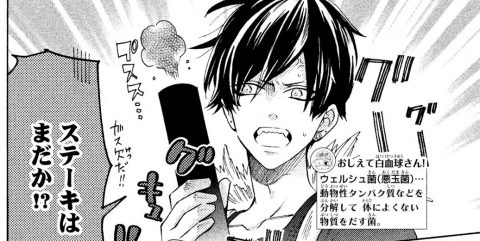
Source: Cells at Work! © Shimizu Akane / Kodansha, Aniplex, David Production
Bad bacteria are harmful to the human body. In this work, the "Cloth perfringens" bacteria, which normally resides in the intestines, often appears. They break down animal protein and produce substances that are harmful to the body.
They become more active and expand their influence when the host's diet becomes more meat-based.
Opportunistic Bacteria

Source: Cells at Work! © Shimizu Akane / Kodansha, Aniplex, David Production
This refers to resident bacteria that are neither good nor bad. They always side with the favorable side, and can be either good or bad. While they may be helpful to both good and bad bacteria when it's beneficial, they are easily betrayed and are therefore viewed as untrustworthy.
Bacterial Balance in a Healthy Body

Source: Cells at Work! © Akane Shimizu/Kodansha, Aniplex, David Production
There is an ideal balance of bacteria inhabiting a healthy body: 20% good bacteria, 10% bad bacteria, and 70% opportunistic bacteria. Surprisingly, the human body is home to the largest number of opportunistic bacteria, so for the good and bad bacteria battling for territory, it is important to get the opportunistic bacteria on your side.
United in the fight against foreign invaders

Source: Cells at Work! © Akane Shimizu/Kodansha, Aniplex, David Production
Normally, good and bad bacteria compete for territory inside the body, but when deadly bacteria invade from outside, the body unites in the fight.
When Salmonella enters the body, the good and bad bacteria temporarily cease hostilities and cooperate to fight the bacteria. For these resident bacteria, survival within the body is their top priority, not expanding their influence. While they normally fight, they cooperate in times like these.
The Adult Body is a Black Company!? "Cells at Work! BLACK"
The third spinoff, "Cells at Work! BLACK," depicts the cells working daily inside the bodies of adults with poor lifestyles.
It features adult content that would never be covered in the original "Cells at Work!", including smoking, drinking, ejaculation, sexually transmitted diseases, and hair loss.

Source: Cells at Work! © Akane Shimizu/Kodansha, Aniplex, David Productions
The inside of an adult's body is like a corporate black company. While struggling with the unreasonable events that occur inside an unhealthy human body, the characters carry out their jobs. However, the characters also appear to be losing sight of the meaning of their work.
Introduction to the Main Characters
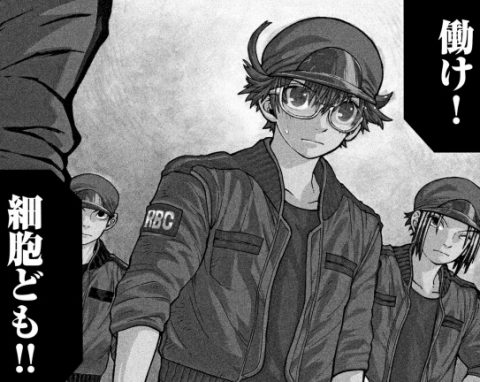
Source: Cells at Work! © Akane Shimizu/Kodansha, Aniplex, davidproduction
The main characters in "Cells at Work! BLACK" are red blood cells and white blood cells. Red blood cells supply oxygen to unhealthy bodies every day, but they are exhausted by the constant pressure to meet quotas and the complaints from their fellow cells.
At times, red blood cells feel like giving up on their work. Humans, however, ignore this and continue to live unhealthy lifestyles. They are pitiful creatures who have no choice but to continue working.
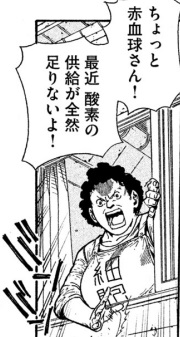
Source: Cells at Work! © Shimizu Akane / Kodansha, Aniplex, davidproduction
White blood cells are busy fighting bacteria and pathogens that develop in unhealthy human bodies. At times, they are significantly outnumbered, but they never give up and continue to complete their work.
In the original "Cells at Work!", red blood cells are female and white blood cells are male, but in "Cells at Work! BLACK," the genders are reversed.
Introducing Memorable Scenes from "Cells at Work! BLACK"

Source: Cells at Work! © Shimizu Akane / Kodansha, Aniplex, davidproduction
Here are some particularly memorable scenes from "Cells at Work! BLACK." Watching this makes me want to take better care of my health on a daily basis. I don't usually care about what's going on inside my body, but after reading this work, I can't help but want to take better care of myself.
Famous Scene from "Cells at Work! BLACK" #1: Red Blood Cells Carrying Oxygen

Source: Cells at Work! © Shimizu Akane / Kodansha, Aniplex, davidproduction
Unhealthy living, cells constantly complaining, and sometimes red blood cells that are attacked by bacteria and suffer from hemolysis. The protagonist, the red blood cell, is fed up with this brutal working environment. Meanwhile, when a human smokes a cigarette, the red blood cells become infected with carbon monoxide and are unable to carry oxygen.
Then, pneumococcus invades the cells, and the protagonist, a red blood cell, becomes angry at the harsh working conditions and declares, "I don't want to do this job anymore!"
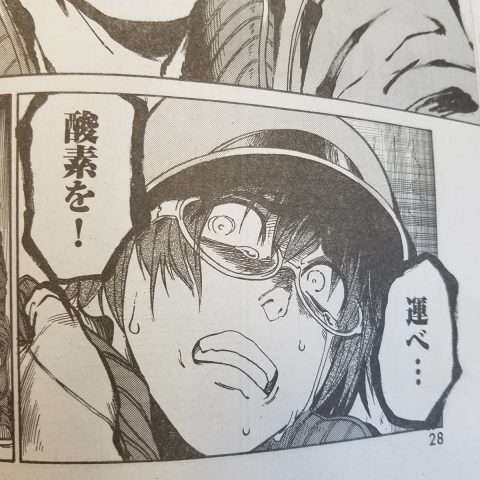
Source: Cells at Work! © Akane Shimizu/Kodansha, Aniplex, David Productions
However, upon seeing this, a senior red blood cell confronts him with the sad reality that red blood cells' only job is to transport oxygen, and that he cannot escape his fate. Nevertheless, he declares that he will do his job and become a fine red blood cell, before dying.
Famous Scene #2 from "Cells at Work! BLACK": Red Blood Cells Getting an Erection with All Their Might
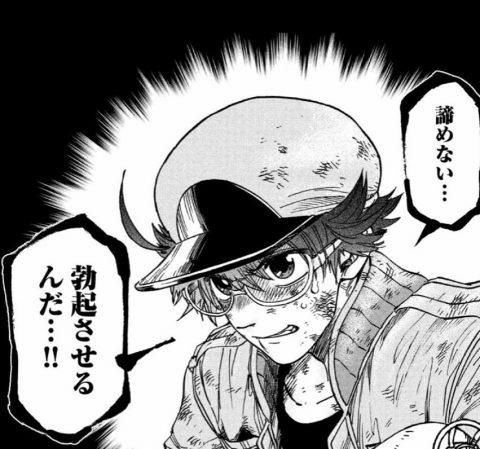
Source: Cells at Work! © Shimizu Akane / Kodansha, Aniplex, davidproduction
Of course, an erection is a phenomenon that occurs inside the body, but it's not something that's covered in the original "Cells at Work!" However, erections are also an important internal reaction for human reproduction, and the cells are desperately trying to do their best.
Particularly impressive is the scene where red blood cells desperately push open the capillaries in the penis as part of the erection mechanism. By causing an erection and stimulating ejaculation, the red blood cells put their whole being into causing an erection, as they know that by causing an erection and encouraging ejaculation, the cells that have grown inside the body have the potential to be born as new life.
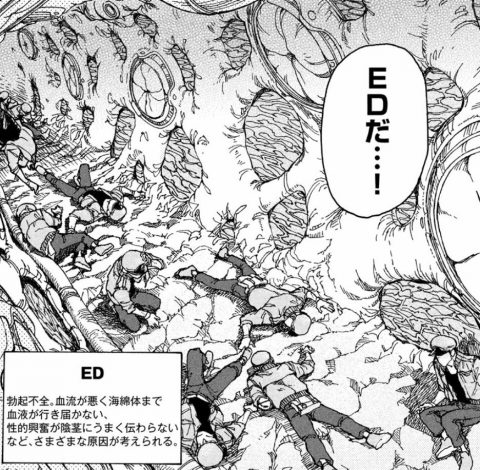
Source: Cells at Work! © Shimizu Akane / Kodansha, Aniplex, davidproduction
Sometimes, erectile dysfunction can cause a loss of momentum, but Viagra can help overcome the crisis. Finally, ejaculation occurs, and the red blood cells feel a sense of accomplishment and look forward to the birth of a new life.
However, not all ejaculations lead to reproductive activity. The red blood cells are disappointed when they learn that their ejaculation was fruitless.
This book is filled with melancholy about cells that have no choice but to work, no matter what the environment.

Source: Cells at Work! © Shimizu Akane / Kodansha, Aniplex, davidproduction
"Cells at Work! BLACK" depicts cells suffering unjustly inside an unhealthy human body. However, no matter what the environment, these cells have no choice but to work.
This book is filled with melancholy as it depicts cells working under conditions comparable to those of a black company. Reading it will make you want to take care of your body.
Summary
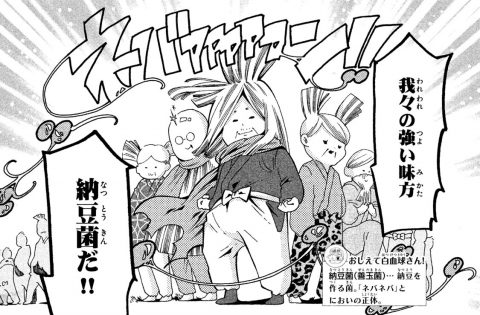
Source: Cells at Work! © Shimizu Akane / Kodansha, Aniplex, davidproduction
This spin-off of "Cells at Work!" explores the human body in ways not depicted in the original work. Also, while "Cells at Work" was generally told from the perspective of the cells inside the body, you can also see the perspective of the bacteria in "Working Bacteria."
Also, there are a variety of unique characters that appear, including cells in unhealthy bodies and cells that don't want to work. If you've watched "Cells at Work" and become hooked on the world of the show, be sure to check out the spin-off works as well.

